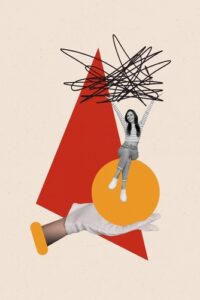 Laban makes the following observation in Choreutics: “Form is produced by the limbs of the body and is governed by their anatomical structure which permits only certain movements to be made arising from the functions of bending, stretching, twisting, and combinations of these.”
Laban makes the following observation in Choreutics: “Form is produced by the limbs of the body and is governed by their anatomical structure which permits only certain movements to be made arising from the functions of bending, stretching, twisting, and combinations of these.”
Based on these limitations, Laban identified “four formal elements as a basis for shaping.” These four linear elements can be found in all alphabets and numerical symbols. Laban delineates these as straight, curved, twisted, and round.
According to Laban, all trace-forms are built from these four basic shapes. To prove this, he invites the reader to scribble on a piece of paper in one uninterrupted line and then to examine parts of the line. These parts resemble the Arabic numerals: 1, 2, 3.
The numeral 1 is straight or slightly curved (think of the spoke-like and arc-like modes of shape change).
The numeral 2 is a double wave or twisted form and the numeral 3 is a rounded or spiral form (think of a carving mode of shape change).
So many forms from only four – that is the power of limits.
